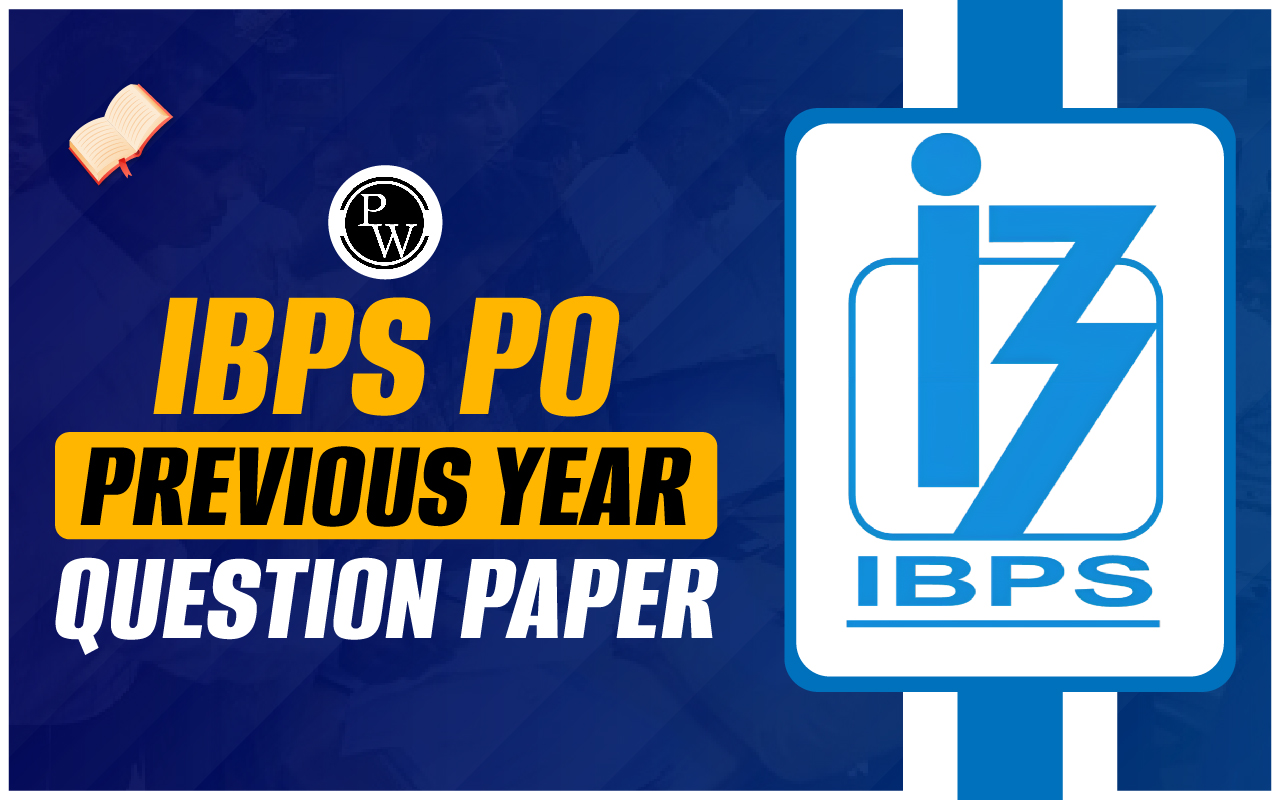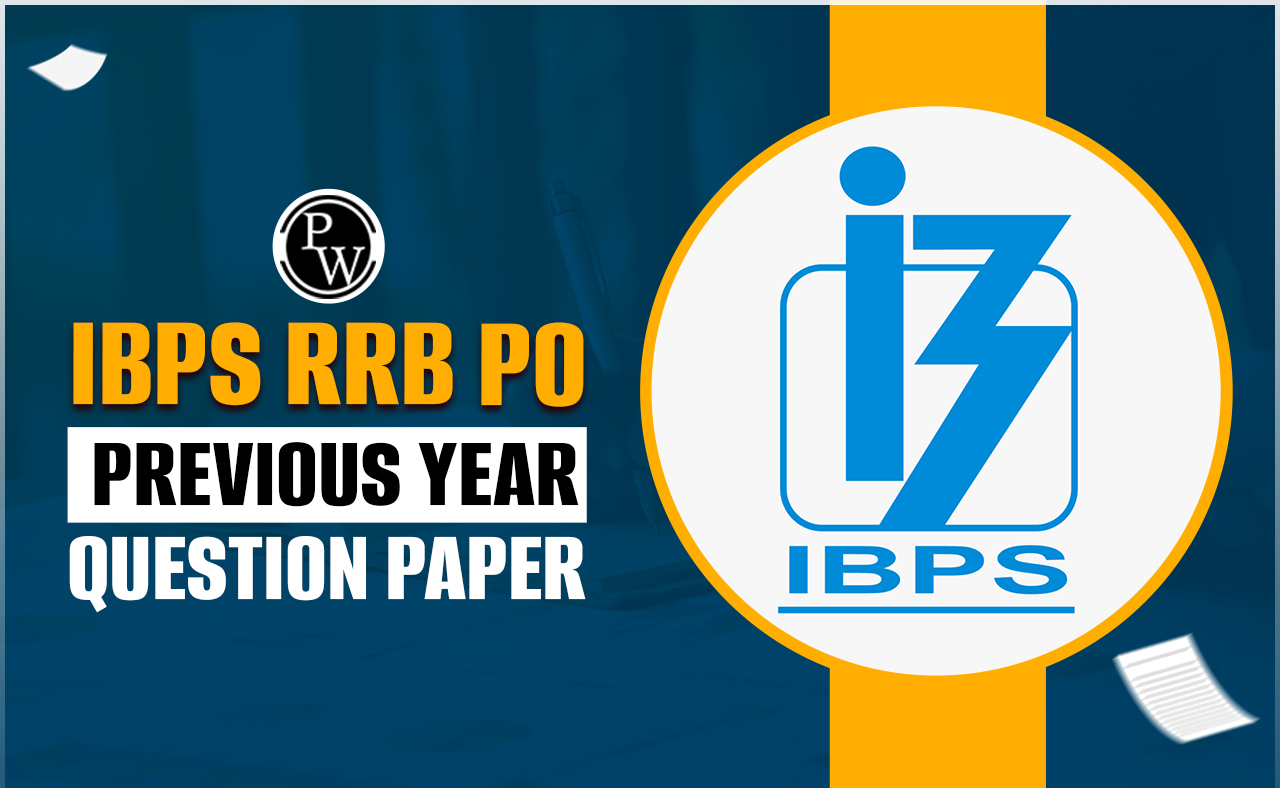
Types of Banks in India: Financial institutions known as banks carry out deposit and lending operations, with distinct types fulfilling specific roles in India. Understanding the functions and types of banks in India is crucial for candidates preparing for government exams, as it forms a significant portion of the syllabus.
This article provides insights into the Indian banking system, elucidating the roles and functions of different banks. Knowledge of these aspects is essential for aspirants aiming to navigate the financial landscape, as it constitutes a key component of banking awareness in various government examinations.
Functions of Banks in India
Banks in India play a crucial role in the country's financial system and contribute significantly to economic development. Their functions can be broadly categorized into the following:
- Acceptance of Deposits: Banks provide a safe and secure place for individuals and businesses to deposit their money. Various types of deposit accounts are offered, such as savings accounts, current accounts, fixed deposits, and recurring deposits.
- Credit Facilitation: Banks extend credit to individuals and businesses to meet their financial requirements. They provide various types of loans and advances, including personal loans, home loans, car loans, and working capital loans for businesses.
- Payment Services: Banks facilitate various payment and fund transfer services, such as electronic funds transfer, cheques, demand drafts, and online banking. They issue instruments like credit cards, debit cards, and prepaid cards to enable electronic transactions.
- Investment Banking: Banks engage in investment banking activities, assisting businesses in raising capital through initial public offerings (IPOs), mergers and acquisitions, and other financial transactions.
- Foreign Exchange Services: Banks play a vital role in facilitating foreign exchange transactions, and helping businesses engage in international trade. They provide services like currency exchange, export financing, and letters of credit.
- Safekeeping and Custodial Services: Banks offer safe deposit lockers and custodial services to safeguard valuable items and documents. They act as custodians for various financial instruments, including securities and bonds.
- Treasury Operations: Banks manage their own treasury operations, which involve investing in government securities, money market instruments, and other financial products to optimize their liquidity and returns.
- Retail and Wholesale Banking: Banks cater to the needs of retail customers (individuals) and wholesale customers (businesses and institutions) through different banking channels and products.
- Financial Advisory Services: Banks provide financial advisory services to clients, offering advice on investment strategies, risk management, and financial planning.
- Government Banking: Banks act as intermediaries between the government and the public by handling various financial transactions, including disbursement of salaries, pension payments, and collection of taxes.
- Social and Developmental Functions: Banks participate in various social and developmental initiatives, promoting financial inclusion, rural development, and poverty alleviation through initiatives like microfinance and priority sector lending.
List of Types of Banks in India
Below is the list of Types of Banks in India:
- Central Bank
- Cooperative Banks
- Commercial Banks
- Regional Rural Banks (RRB)
- Local Area Banks (LAB)
- Specialized Banks
- Small Finance Banks
- Payments Banks

Roles and Functions of Types of Banks in India
Below are the roles and functions of types of Banks in India:
1. Central Bank (Reserve Bank of India)
- Role: The Reserve Bank of India (RBI) is the central bank in India.
- Functions: Formulates and implements monetary policies, issues currency, regulates and supervises the banking sector, and manages the country's foreign exchange reserves.
2. Cooperative Banks
- Ownership: Owned and operated by a group of individuals, typically with a common interest.
- Functions: Provide financial services to members, emphasizing mutual help and support. They may operate at the state or district level.
3. Commercial Banks
- Ownership: Mostly private or public entities.
- Functions: Offer a wide range of financial services to individuals, businesses, and government entities. These services include loans, deposits, and various other banking and financial products.
4. Regional Rural Banks (RRB)
- Ownership: Jointly owned by the Central Government, State Government, and Sponsor Banks.
- Functions: Primarily focus on rural and agricultural development. They provide banking and financial services to the rural population, including farmers and small businesses.
5. Local Area Banks (LAB)
- Ownership: Small, localized entities.
- Functions: Primarily operate in specific local areas to cater to the financial needs of that particular region. They are intended to serve local communities more intimately.
6. Specialized Banks
- Types: Includes institutions like the Industrial Development Bank of India (IDBI), Export-Import Bank of India (EXIM Bank), and National Bank for Agriculture and Rural Development (NABARD).
- Functions: Tailored to cater to specific sectors like industry, exports, and agriculture, respectively.
7. Small Finance Banks
- Ownership: Mostly private entities.
- Functions: Primarily focus on financial inclusion by providing banking services to small businesses, micro and small industries, and other unorganized sectors.
8. Payments Banks
- Specialization: Primarily engaged in providing payment services and remittance facilities to individuals and businesses.
- Functions: Focus on digital transactions, allowing customers to open savings accounts, remit funds, and make payments, but they do not offer loans or credit cards.
Brief Description of Types of Banks in India
In India, various types of banks cater to different financial needs and functions. Here are the main types of banks in India:
1. Types of Banks in India: Scheduled Commercial Banks
- Public Sector Banks (PSBs): These are banks where the majority stake is held by the government. Some prominent examples include State Bank of India (SBI), Punjab National Bank (PNB), and Bank of Baroda.
- Private Sector Banks: These banks are owned and operated by private individuals or corporations. Examples include ICICI Bank, HDFC Bank, and Axis Bank.
- Foreign Banks: These are banks headquartered in foreign countries but operate in India. They have a limited presence compared to domestic banks. Examples include Citibank, Standard Chartered, and HSBC.
2. Types of Banks in India: Regional Rural Banks (RRBs)
- RRBs are established with the objective of developing the rural economy by providing credit and other facilities, especially to small and marginal farmers, agricultural laborers, and artisans.
- They operate at the regional level and are sponsored by a nationalized bank, a State Bank of India (SBI), or a private sector bank.
3. Types of Banks in India: Cooperative Banks
- Urban Cooperative Banks (UCBs): These banks operate in urban and semi-urban areas, providing banking services to residents and businesses. They are cooperative societies registered under the Cooperative Societies Act.
- Rural Cooperative Banks: These banks operate in rural areas and cater to the financial needs of the rural population. They are often organized at the district or taluka level.
4. Types of Banks in India: Payments Banks
- Payments banks are a new category of banks introduced by the Reserve Bank of India (RBI) to promote financial inclusion. They can accept deposits, provide remittance services, issue debit cards, and facilitate internet banking but cannot offer loans or credit cards.
5. Types of Banks in India: Small Finance Banks
- Small Finance Banks focus on providing financial services to small and marginal customers, including small businesses, micro and small industries, and unorganized sector entities. They are intended to promote financial inclusion.
6. Types of Banks in India: Development Banks
- These banks are specialized financial institutions that provide long-term finance for industrial and economic development projects. Examples include the Industrial Development Bank of India (IDBI) and the National Bank for Agriculture and Rural Development (NABARD).
7. Types of Banks in India: Non-Banking Financial Companies (NBFCs)
- While not banks in the traditional sense, NBFCs play a crucial role in the Indian financial system by providing various financial services such as loans, investment advice, and money market activities.
These are the major types of banks in India, each serving specific purposes and segments of the population.
All About the Reserve Bank of India
The Reserve Bank of India (RBI) is the central banking institution of India and is responsible for the regulation and supervision of the country's financial and banking system. Here's an overview of various aspects related to the Reserve Bank of India:
1. Establishment
- The RBI was established on April 1, 1935, in accordance with the provisions of the Reserve Bank of India Act, of 1934.
2. Role and Functions
- Monetary Policy: Formulating and implementing monetary policy to maintain price stability while keeping in mind the objective of economic growth.
- Currency Issuance: Issuing and managing the Indian Rupee and ensuring an adequate supply of currency notes and coins.
- Regulator and Supervisor: Regulating and supervising the functioning of banks and financial institutions to ensure the stability of the financial system.
- Banker to the Government: Managing the central and state government accounts, acting as a banker to the government, and facilitating the issuance of government securities.
- Foreign Exchange Management: Managing the country's foreign exchange reserves and regulating the foreign exchange market.
- Developmental Role: Undertaking various developmental and promotional activities to support the growth of the financial sector.
3. Organizational Structure
- The RBI is headed by the Governor, who is supported by four Deputy Governors. The central board of directors, appointed by the government, oversees the overall functioning of the RBI.
4. Monetary Policy Committee (MPC)
- The MPC was introduced in 2016 and is responsible for setting the benchmark interest rate (repo rate) to achieve the inflation target set by the government.
5. Currency Management
- The RBI is the sole issuer of currency notes in the country. It ensures an adequate supply of currency to meet the public's demand.
6. Banking Regulation
- The RBI regulates and supervises banks and financial institutions in India to ensure their stability and soundness.
7. Financial Stability and Development Council (FSDC)
- The RBI plays a crucial role in the FSDC, which is an apex body that coordinates various financial regulators and promotes financial stability.
8. Foreign Exchange Reserves
- The RBI manages India's foreign exchange reserves, holding a significant amount of foreign currencies and gold.
9. Research and Training
- The RBI conducts research and provides training in various areas related to central banking, finance, and economics.
10. Initiatives and Policies
- The RBI has implemented various initiatives and policies over the years to enhance financial inclusion, promote digital payments, and ensure the stability of the financial system.
I. Types of Banks of India: Scheduled Commercial Banks
Scheduled Commercial Banks (SCBs) are financial institutions that are authorized to operate as banks under the regulation and supervision of the central bank (in most countries) or other relevant regulatory authorities. These banks are an integral part of the formal banking sector and play a crucial role in the economic development of a country by facilitating financial intermediation.
Key features of Scheduled Commercial Banks
- Regulation and Supervision: SCBs operate under a regulatory framework established by the central bank or a designated regulatory authority. The regulatory framework outlines the rules and guidelines that banks must adhere to in their operations.
- Scheduled Status: The term "scheduled" implies that these banks are listed in the Second Schedule of the Reserve Bank of India (RBI) Act, 1934, in the case of India. In other countries, a similar designation may be used. This status is an indication that these banks meet certain criteria and are eligible to get facilities from the central bank.
- Acceptance of Demand Deposits: SCBs are allowed to accept demand deposits, which include savings and current accounts. These deposits are payable on demand, making them a key feature of commercial banking.
- Lending and Credit Creation: SCBs provide loans and credit to individuals, businesses, and other entities. This includes various types of loans such as personal loans, home loans, business loans, and more. Through lending activities, banks contribute to economic growth.
- Payment Services: SCBs offer a range of payment services, including electronic fund transfers, check clearing and other payment mechanisms. They facilitate the movement of money within the economy.
- Interest Income: One of the primary sources of income for SCBs is the interest earned on loans and advances. Banks charge interest on loans provided to borrowers, and the interest income contributes significantly to their overall revenue.
- Wide Branch Network: Commercial banks typically have an extensive branch network to reach a large customer base. This facilitates better access to banking services for individuals and businesses.
- Foreign Exchange Operations: Many SCBs engage in foreign exchange operations, including facilitating international trade, offering foreign currency accounts, and participating in the foreign exchange market.
- Compliance with Prudential Norms: SCBs are required to comply with prudential norms and guidelines set by regulatory authorities. These norms are designed to ensure the stability and soundness of the banking system.
List of Scheduled Commercial Banks in India
Here is a list of some major scheduled commercial banks in India:
1. List of Scheduled Public Sector Banks
Below is the list of Scheduled Public Sector Banks
| List of Scheduled Public Sector Banks | |
|---|---|
| Sr.No. | Name of the Bank |
| 1. | Bank of Baroda |
| 2. | Bank of India |
| 3. | Bank of Maharashtra |
| 4. | Canara Bank |
| 5. | Central Bank of India |
| 6. | Indian Bank |
| 7. | Indian Overseas Bank |
| 8. | Punjab & Sind Bank |
| 9. | Punjab National Bank |
| 10. | State Bank of India |
| 11. | UCO Bank |
| 12. | Union Bank of India |
2. List of Scheduled Public Sector Banks
Below is the list of Scheduled Public Sector Banks
| List of Scheduled Private Sector Banks | |
|---|---|
| Sr.No. | Name of the Bank |
| 1. | Axis Bank Ltd. |
| 2. | Bandhan Bank Ltd. |
| 3. | CSB Bank Ltd. |
| 4. | City Union Bank Ltd. |
| 5. | DCB Bank Ltd. |
| 6. | Dhanlaxmi Bank Ltd. |
| 7. | Federal Bank Ltd. |
| 8. | HDFC Bank Ltd |
| 9. | ICICI Bank Ltd. |
| 10. | Induslnd Bank Ltd |
| 11. | IDFC First Bank Ltd. |
| 12. | Jammu & Kashmir Bank Ltd. |
| 13. | Karnataka Bank Ltd. |
| 14. | Karur Vysya Bank Ltd. |
| 15. | Kotak Mahindra Bank Ltd |
| 16. | Nainital Bank Ltd. |
| 17. | RBL Bank Ltd. |
| 18. | South Indian Bank Ltd. |
| 19. | Tamilnad Mercantile Bank Ltd. |
| 20. | YES Bank Ltd. |
| 21. | IDBI Bank Ltd. |
3. List of Scheduled Small Finance Banks
Below is the list of Scheduled Small Finance Banks:
| List of Scheduled Small Finance Banks | |
|---|---|
| Sr.No. | Name of the Bank |
| 1. | Au Small Finance Bank Limited |
| 2. | Capital Small Finance Bank Limited |
| 3. | Equitas Small Finance Bank Limited |
| 4. | Suryoday Small Finance Bank Limited |
| 5. | Ujjivan Small Finance Bank Limited |
| 6. | Utkarsh Small Finance Bank Limited |
| 7. | ESAF Small Finance Bank Limited |
| 8. | Fincare Small Finance Bank Limited |
| 9. | Jana Small Finance Bank Limited |
| 10. | North East Small Finance Bank Limited |
| 11. | Shivalik Small Finance Bank Limited |
| 12. | Unity Small Finance Bank Limited |
4. List of Scheduled Payments Banks
Below is the list of Scheduled Payments Banks:
| List of Scheduled Payments Banks | |
|---|---|
| Sr.No. | Name of the Bank |
| 1. | India Post Payments Bank Limited |
| 2. | Fino Payments Bank Limited |
| 3. | Paytm Payments Bank Limited |
| 4. | Airtel Payments Bank Limited |
5. List of Scheduled Regional Rural Banks
Below is the list of Scheduled Regional Rural Banks:
| List of Scheduled Regional Rural Banks | |
|---|---|
| Sr.No. | Name of the RRB |
| 1. | Andhra Pragathi Grameena Bank |
| 2. | Andhra Pradesh Grameena Vikas Bank |
| 3. | Arunachal Pradesh Rural Bank |
| 4. | Aryavart Bank |
| 5. | Assam Gramin Vikash Bank |
| 6. | Bangiya Gramin Vikas Bank |
| 7. | Baroda Gujarat Gramin Bank |
| 8. | Baroda Rajasthan Kshetriya Gramin Bank |
| 9. | Baroda UP Bank |
| 10. | Chaitanya Godavari Grameena Bank |
| 11. | Chhattisgarh Rajya Gramin Bank |
| 12. | Dakshin Bihar Gramin Bank |
| 13. | Ellaquai Dehati Bank |
| 14. | Himachal Pradesh Gramin Bank |
| 15. | J&K Grameen Bank |
| 16. | Jharkhand Rajya Gramin Bank |
| 17. | Karnataka Gramin Bank |
| 18. | Karnataka Vikas Grameena Bank |
| 19. | Kerala Gramin Bank |
| 20. | Madhya Pradesh Gramin Bank |
| 21. | Madhyanchal Gramin Bank |
| 22. | Maharashtra Gramin Bank |
| 23. | Manipur Rural Bank |
| 24. | Meghalaya Rural Bank |
| 25. | Mizoram Rural Bank |
| 26. | Nagaland Rural Bank |
| 27. | Odisha Gramya Bank |
| 28. | Paschim Banga Gramin Bank |
| 29. | Prathama UP Gramin Bank |
| 30. | Puduvai Bharathiar Grama Bank |
| 31. | Punjab Gramin Bank |
| 32. | Rajasthan Marudhara Gramin Bank |
| 33. | Saptagiri Grameena Bank |
| 34. | Sarva Haryana Gramin Bank |
| 35. | Saurashtra Gramin Bank |
| 36. | Tamil Nadu Grama Bank |
| 37. | Telangana Grameena Bank |
| 38. | Tripura Gramin Bank |
| 39. | Utkal Grameen bank |
| 40. | Uttar Bihar Gramin Bank |
| 41. | Uttarakhand Gramin Bank |
| 42. | Uttarbanga Kshetriya Gramin Bank |
| 43. | Vidharbha Konkan Gramin Bank |
6. List of Scheduled Foreign Banks in India
Below is the list of Foreign banks in India:
| List of Scheduled Foreign Banks in India | |
|---|---|
| Sl.No | Name of bank |
| 1. | AB Bank Ltd. |
| 2. | American Express Banking Corporation |
| 3. | Australia and New Zealand Banking Group Ltd. |
| 4. | Barclays Bank Plc. |
| 5. | Bank of America |
| 6. | Bank of Bahrain & Kuwait BSC |
| 7. | Bank of Ceylon |
| 8. | Bank of China |
| 9. | Bank of Nova Scotia |
| 10. | BNP Paribas |
| 11. | Citibank N.A. |
| 12. | Cooperatieve Rabobank U.A. |
| 13. | Credit Agricole Corporate & Investment Bank |
| 14. | Credit Suisse A.G |
| 15. | CTBC Bank Co., Ltd. |
| 16. | DBS Bank India Limited* |
| 17. | Deutsche Bank |
| 18. | Doha Bank Q.P.S.C |
| 19. | Emirates Bank NBD |
| 20. | First Abu Dhabi Bank PJSC |
| 21. | FirstRand Bank Ltd |
| 22. | HSBC Ltd |
| 23. | Industrial & Commercial Bank of China Ltd. |
| 24. | Industrial Bank of Korea |
| 25. | J.P. Morgan Chase Bank N.A. |
| 26. | JSC VTB Bank |
| 27. | KEB Hana Bank |
| 28. | Kookmin Bank |
| 29. | Krung Thai Bank Public Co. Ltd. |
| 30. | Mashreq Bank PSC |
| 31. | Mizuho Bank Ltd. |
| 32. | MUFG Bank, Ltd. |
| 33. | NatWest Markets Plc |
| 34. | NongHyup Bank |
| 35. | PT Bank Maybank Indonesia TBK |
| 36. | Qatar National Bank (Q.P.S.C.) |
| 37. | Sberbank |
| 38. | SBM Bank (India) Limited* |
| 39. | Shinhan Bank |
| 40. | Societe Generale |
| 41. | Sonali Bank Ltd. |
| 42. | Standard Chartered Bank |
| 43. | Sumitomo Mitsui Banking Corporation |
| 44. | United Overseas Bank Ltd |
| 45. | Woori Bank |
II. Types of Banks of India: Regional Rural Banks (RRBs)
Regional Rural Banks (RRBs) in India were established with the aim of developing rural areas by providing credit and other banking facilities. RRBs were set up under the recommendations of the Narasimham Committee and were later authorized by an ordinance issued on September 26, 1975, and subsequently, the RRB Act was enacted in 1976.
Description of Regional Rural Banks (RRBs)
Regional Rural Banks are financial institutions that operate at the regional level in rural areas. They are sponsored by a nationalized bank, a state government, and the Government of India in the ratio of 50:15:35. The idea behind RRBs is to promote financial inclusion, provide credit to farmers, artisans, and small entrepreneurs in rural areas, and help them improve their economic conditions.
Features of Regional Rural Banks (RRBs)
- Ownership Structure: RRBs are jointly owned by the Government of India, the concerned State Government, and the sponsor bank. The ownership pattern is 50% by the sponsor bank, 35% by the central government, and 15% by the state government.
- Targeted Customer Base: RRBs primarily cater to the banking needs of the rural and agricultural sector. They focus on providing financial services to small and marginal farmers, rural artisans, and other economically weaker sections in rural areas.
- Branch Network: RRBs operate through a network of branches in rural and semi-urban areas. They are intended to bridge the gap between the formal banking sector and rural communities.
- Financial Products and Services: RRBs offer a range of financial products and services, including agricultural loans, small business loans, savings accounts, fixed deposits, and other banking facilities tailored to the needs of the rural population.
- Government Support: RRBs receive financial and managerial support from the sponsor banks, the central government, and the state government. This support is essential for their functioning and growth.
- Autonomy: While RRBs operate at the regional level, they also have a degree of autonomy in decision-making. However, the policies and guidelines are generally set by the National Bank for Agriculture and Rural Development (NABARD) and the Reserve Bank of India (RBI).
List of Regional Rural Banks in India
The Table below contains the list of Regional Rural Banks in India, along with their Sponsor Banks and States:
| List of Regional Rural Banks in India | |||
|---|---|---|---|
| Sl.No. | Name of Regional Rural Bank | Sponsor Bank | State |
| 1 | Andhra Pragathi Grameena Bank | Canara Bank | Andhra Pradesh |
| 2 | Chaitanya Godavari Grameena Bank | Union Bank of India | Andhra Pradesh |
| 3 | Saptagiri Grameena Bank | Indian Bank | Andhra Pradesh |
| 4 | Arunachal Pradesh Rural Bank | State Bank of India | Arunachal Pradesh |
| 5 | Assam Gramin Vikash Bank | Punjab National Bank | Assam |
| 6 | Dakshin Bihar Gramin Bank | Punjab National Bank | Bihar |
| 7 | Uttar Bihar Gramin Bank | Central Bank of India | Bihar |
| 8 | Chhattisgarh Rajya Gramin Bank | State Bank of India | Chhattisgarh |
| 9 | Baroda Gujarat Gramin Bank | Bank of Baroda | Gujarat |
| 10 | Saurashtra Gramin Bank | State Bank of India | Gujarat |
| 11 | Sarva Haryana Gramin Bank | Punjab National Bank | Haryana |
| 12 | Himachal Pradesh Gramin Bank | Punjab National Bank | Himachal Pradesh |
| 13 | Ellaquai Dehati Bank | State Bank of India | Jammu & Kashmir |
| 14 | J&K Grameen Bank | J&K Bank Ltd. | Jammu & Kashmir |
| 15 | Jharkhand Rajya Gramin Bank | State Bank of India | Jharkhand |
| 16 | Karnataka Gramin Bank | Canara Bank | Karnataka |
| 17 | Karnataka Vikas Grameena Bank | Canara Bank | Karnataka |
| 18 | Kerala Gramin Bank | Canara Bank | Kerala |
| 19 | Madhya Pradesh Gramin Bank | Bank of India | Madhya Pradesh |
| 20 | Madhyanchal Gramin Bank | State Bank of India | Madhya Pradesh |
| 21 | Maharashtra Gramin Bank | Bank of Maharashtra | Maharashtra |
| 22 | Vidharbha Konkan Gramin Bank | Bank of India | Maharashtra |
| 23 | Manipur Rural Bank | Punjab National Bank | Manipur |
| 24 | Meghalaya Rural Bank | State Bank of India | Meghalaya |
| 25 | Mizoram Rural Bank | State Bank of India | Mizoram |
| 26 | Nagaland Rural Bank | State Bank of India | Nagaland |
| 27 | Odisha Gramya Bank | Indian Overseas Bank | Odisha |
| 28 | Utkal Grameen Bank | State Bank of India | Odisha |
| 29 | Puduvai Bharthiar Grama Bank | Indian Bank | Puducherry |
| 30 | Punjab Gramin Bank | Punjab National Bank | Punjab |
| 31 | Baroda Rajasthan Kshetriya Gramin Bank | Bank of Baroda | Rajasthan |
| 32 | Rajasthan Marudhara Gramin Bank | State Bank of India | Rajasthan |
| 33 | Tamil Nadu Grama Bank | Indian Bank | Tamil Nadu |
| 34 | Andhra Pradesh Grameena Vikas Bank | State Bank of India | Telangana |
| 35 | Telangana Grameena Bank | State Bank of India | Telangana |
| 36 | Tripura Gramin Bank | Punjab National Bank | Tripura |
| 37 | Aryavart Bank | Bank of India | Uttar Pradesh |
| 38 | Baroda UP Bank | Bank of Baroda | Uttar Pradesh |
| 39 | Prathama UP Gramin Bank | Punjab National Bank | Uttar Pradesh |
| 40 | Uttarakhand Gramin Bank | State Bank of India | Uttarakhand |
| 41 | Bangiya Gramin Vikash Bank | Punjab National Bank | West Bengal |
| 42 | Paschim Banga Gramin Bank | UCO Bank | West Bengal |
| 43 | Uttar Banga Kshetriya Gramin Bank | Central Bank of India | West Bengal |
III. Types of Banks of India: Cooperative banks in India
Cooperative banks in India play a crucial role in the country's banking system, especially in rural and semi-urban areas. These banks are financial institutions that operate on a cooperative basis, with the primary objective of providing financial services to their members. Here's an overview of cooperative banks in India, including their description, features, and a list of some prominent ones:
Description of Cooperative banks in India
Cooperative banks are financial entities that are owned and operated by their members. The cooperative banking model is based on the principles of self-help, mutual help, and democratic decision-making. These banks are formed to meet the credit and banking needs of a specific group of people, often within a particular community or region.
Features of Cooperative banks in India
- Ownership by Members: Cooperative banks are owned and controlled by their members, who are also the customers. Each member typically has one vote, regardless of the number of shares held.
- Democratic Management: The management and decision-making processes are democratic, with members participating in key decisions through general body meetings.
- Social Objectives: Cooperative banks often have social and economic objectives, aiming to uplift the economic conditions of their members and promote financial inclusion.
- Focus on Local Development: These banks primarily operate at the grassroots level, focusing on the financial needs of local communities and contributing to local development.
- Dual Role: Cooperative banks often play a dual role as both a depositor and a lender, serving the financial needs of members by accepting deposits and providing credit facilities.
- Regulation: Cooperative banks in India are regulated by the Reserve Bank of India (RBI) and are subject to the Banking Regulation Act, 1949.
List of Cooperative Banks in India
Let us have a look at the list of various types of Cooperative Banks in India:
List of Scheduled State Co-operative Banks
| Serial Number | Name of Bank |
|---|---|
| 1 | The Andhra Pradesh State Co-operative Bank Ltd. |
| 2 | The Bihar State Co-operative Bank Ltd. |
| 3 | The Chhatisgarh Rajya Sahakari Bank Maryadit |
| 4 | The Goa State Co-operative Bank Ltd. |
| 5 | Gujarat State Co-operative Bank Ltd. |
| 6 | The Haryana State Co-operative Apex Bank Ltd. |
| 7 | The Himachal Pradesh State Co-operative Bank Ltd. |
| 8 | The Karnataka State Co-operative Apex Bank Ltd. |
| 9 | The Kerala State Co-operative Bank Ltd. |
| 10 | The Madhya Pradesh Rajya Sahakari Bank Maryadit |
| 11 | The Maharashtra State Co-operative Bank Ltd. |
| 12 | The Odisha State Co-operative Bank Ltd. |
| 13 | The Puducherry State Co-operative Bank Ltd. |
| 14 | The Punjab State Co-operative Bank Ltd. |
| 15 | The Rajasthan State Co-operative Bank Ltd. |
| 16 | The Tamil Nadu State Apex Co-operative Bank Ltd. |
| 17 | The Telangana State Cooperative Apex Bank Ltd. |
| 18 | The Uttar Pradesh Co-operative Bank Ltd. |
| 19 | The Uttarakhand State Co-operative Bank Ltd. |
| 20 | The West Bengal State Co-operative Bank Ltd. |
| 21 | Tripura State Co-operative Bank Ltd. |
| 22 | The Delhi State Cooperative Bank Ltd. |
| 23 | The Meghalaya Co-operative Apex Bank Ltd. |
| 24 | Sikkim State Co-operative Bank Ltd. |
List of Non-Scheduled State Co-operative Banks
| Serial Number | Name of Bank |
|---|---|
| 1 | The Andaman and Nicobar State Co-operative Bank Ltd. |
| 2 | The Arunachal Pradesh State Co-operative Apex Bank Ltd. |
| 3 | The Assam Co-operative Apex Bank Ltd. |
| 4 | The Chandigarh State Co-operative Bank Ltd. |
| 5 | The Jammu and Kashmir State Co-operative Bank Ltd. |
| 6 | Jharkhand State Cooperative Bank Ltd. |
| 7 | The Manipur State Co-operative Bank Ltd. |
| 8 | The Mizoram Co-operative Apex Bank Ltd. |
| 9 | The Nagaland State Co-operative Bank Ltd. |
| 10 | The Daman and Diu State Co-operative Bank Ltd. |
List of Scheduled Urban Cooperative Banks
| Serial Number | Name of Bank |
|---|---|
| 1 | Ahmedabad Mercantile Co-Op Bank Ltd. |
| 2 | Kalupur Commercial Coop.Bank Ltd. |
| 3 | Mehsana Urban Co-Op Bank Ltd. |
| 4 | Nutan Nagarik Sahakari Bank Ltd., Ahmedabad |
| 5 | Rajkot Nagrik Sahakari Bank Ltd. |
| 6 | SBPP Co-operative Bank Ltd., Killa Pardi, Dist Valsad (Gujarat) |
| 7 | Surat Peoples Coop Bank Ltd. |
| 8 | Amanath Co-operative Bank Ltd. Bangalore |
| 9 | Andhra Pradesh Mahesh Co-Op Urban Bank Ltd. Hyderabad |
| 10 | Indian Mercantile Co-operative Bank Ltd. Lucknow |
| 11 | Abhyudaya Co-operative Bank Ltd., Mumbai |
| 12 | Apna Sahakari Bank Ltd. Mumbai |
| 13 | Bassein Catholic Co-operative Bank Ltd. Mumbai |
| 14 | Bharat Co-operative Bank (Mumbai) Ltd., Mumbai |
| 15 | Bharati Sahakari Bank Limited. Mumbai |
| 16 | Bombay Mercantile Co-operative Bank Limited Mumbai |
| 17 | Citizen Credit Co-operative Bank Ltd., Mumbai |
| 18 | Cosmos Co-operative Bank Ltd Mumbai |
| 19 | Dombivli Nagari Sahakari Bank Ltd. Mumbai |
| 20 | G. P. Parsik Janata Sahakari Bank Ltd., Thane Mumbai |
| 21 | Greater Bombay Co-operative Bank Limited Mumbai |
| 22 | GS Mahanagar Co-operative Bank Ltd., Mumbai |
| 23 | Jalgaon Janata Sahakari Bank Ltd. Mumbai |
| 24 | Jalgaon People's Co-operative Bank Ltd. Mumbai |
| 25 | Janakalyan Sahakari Bank Ltd., Mumbai |
| 26 | Janalaxmi Co-operative Bank Ltd., Nashik Mumbai |
| 27 | Janata Sahakari Bank Ltd., Pune. Mumbai |
| 28 | Kallappanna Awade Ichalkaranji Janata Sahakari Bank Ltd. Mumbai |
| 29 | Kalyan Janata Sahakari Bank Ltd., Kalyan Mumbai |
| 30 | Karad Urban Co-operative Bank Ltd. Mumbai |
| 31 | Nasik Merchant's Co-operative Bank Ltd. Mumbai |
| 32 | New India Co-operative Bank Ltd., Mumbai Mumbai |
| 33 | NKGSB Co-operative Bank Ltd., Mumbai Mumbai |
| 34 | Pravara Sahakari Bank Ltd. Mumbai |
| 35 | Rajarambapu Sahakari Bank Ltd. Mumbai |
| 36 | Sangli Urban Co-operative Bank Ltd., Sangli Mumbai |
| 37 | Saraswat Co-operative Bank Ltd., Bombay Mumbai |
| 38 | Shamrao Vithal Co-operative Bank Ltd. Mumbai |
| 39 | Solapur Janata Sahakari Bank Ltd. Mumbai |
| 40 | Thane Bharat Sahakari Bank Ltd. Mumbai |
| 41 | TJSB Sahakari Bank Mumbai |
| 42 | Vasai Vikas Sahakari Bank Ltd. Mumbai |
| 43 | Zoroastrian Co-operative Bank Ltd., Bombay Mumbai |
| 44 | Nagpur Nagrik Sahakari Bank Ltd. Nagpur |
| 45 | Shikshak Sahakari Bank Ltd., Nagpur. Nagpur |
| 46 | The Akola Janata Commercial Co-operative Bank Ltd., Akola. Nagpur |
| 47 | The Akola Urban Co-operative Bank Ltd., Akola. Nagpur |
| 48 | The Khamgaon Urban Co-operative Bank Ltd., Khamgaon. Nagpur |
| 49 | Goa Urban Co-operative Bank Limited. Panaji |
IV. Types of Banks of India: Payments Banks in India
Payments Banks in India were a specific category of banks introduced by the Reserve Bank of India (RBI) to promote financial inclusion. Please note that there might have been changes or developments in this sector since then, and it's advisable to check the latest information from official sources. Here is a general overview of Payments Banks in India:
Description of Payments Banks in India
Payments Banks are a new category of banks introduced by the Reserve Bank of India (RBI) to provide basic banking services with a focus on promoting financial inclusion. These banks are allowed to undertake a restricted set of banking functions, primarily related to payments and remittances.
Features of Payments Banks in India
- Limited Services: Payments Banks are not allowed to offer the full suite of banking services provided by traditional banks. They are restricted from lending money but can accept deposits (up to a certain limit), issue debit cards, and facilitate payments and remittances.
- Focus on Digital Channels: Payments Banks are expected to leverage technology to provide cost-effective services. They often rely heavily on digital channels such as mobile banking, internet banking, and ATMs to reach a wider customer base.
- Financial Inclusion: The primary objective of Payments Banks is to promote financial inclusion by reaching the unbanked and underbanked population. They aim to provide basic banking services to those who do not have access to traditional banking.
- Low-Cost Operations: Payments Banks are expected to maintain low-cost operations to make their services financially viable. By leveraging technology and avoiding the overhead associated with a full-service bank, they can keep operational costs low.
- Collaboration with Other Banks: Payments Banks can collaborate with other banks to provide a wider range of services. For example, they can partner with commercial banks to offer lending products and insurance.
List of Payments Banks in India
Below is the list of Payments Banks in India:
- Airtel Payments Bank
- Paytm Payments Bank
- India Post Payments Bank (IPPB)
- Jio Payments Bank
- Fino Payments Bank
- NSDL Payments Bank
- Aditya Birla Payments Bank
V. Types of Banks of India: Small Finance Banks in India
Small Finance Banks (SFBs) in India were a category of financial institutions that aimed to provide financial services to underserved and unserved sections of the population, including small business units, small and marginal farmers, micro and small industries, and unorganized sector entities. Here is a general description of Small Finance Banks, their features, and a list of some of the Small Finance Banks in India:
Description of Small Finance Banks in India
The primary objective of Small Finance Banks is to promote financial inclusion by providing banking services to segments of the population that typically do not have access to formal banking.
Features of Small Finance Banks in India
- Regulation: Small Finance Banks in India are regulated by the Reserve Bank of India (RBI) under the framework for Small Finance Banks.
- Target Customers: They cater to small business units, small and marginal farmers, micro and small industries, and other unorganized sector entities.
- Products and Services: SFBs offer a range of banking products and services, including savings accounts, fixed deposits, recurring deposits, small loans, micro-credit, and other basic banking facilities.
- Geographical Focus: Small Finance Banks typically focus on serving the local population and meeting the credit needs of small businesses in specific regions.
- Priority Sector Lending: SFBs are required to adhere to priority sector lending norms, ensuring that a significant portion of their lending is directed towards priority sectors identified by the RBI.
- Technology Adoption: Many Small Finance Banks leverage technology to enhance their reach and provide digital banking solutions to customers in remote areas.
- Financial Inclusion: The core objective is to promote financial inclusion by reaching out to the unbanked and underbanked sections of society.
List of Small Finance Banks in India
Below is the list of Small Finance Banks in India:
- AU Small Finance Bank
- Equitas Small Finance Bank
- Ujjivan Small Finance Bank
- Jana Small Finance Bank
- ESAF Small Finance Bank
- North East Small Finance Bank
- Fincare Small Finance Bank
VI. Types of Banks of India: Development Banks
Development banks in India play a crucial role in fostering economic development by providing financial assistance and support to various sectors. These banks focus on promoting long-term projects that contribute to the overall growth of the country. Here are some key development banks in India, along with their descriptions, features, and a list:
1. Industrial Development Bank of India (IDBI)
- Description: IDBI was established in 1964 as a financial institution to provide credit and financial assistance to industrial projects. It was later converted into a full-fledged bank in 2004.
- Features: IDBI supports various industries and projects, including infrastructure, and plays a key role in the development of the industrial sector.
2. Small Industries Development Bank of India (SIDBI)
- Description: SIDBI was established in 1990 to cater to the financial needs of small-scale industries. It focuses on the promotion, financing, and development of micro, small, and medium enterprises (MSMEs).
- Features: SIDBI provides financial assistance through direct and indirect means, supporting MSMEs with various schemes and initiatives.
3. National Bank for Agriculture and Rural Development (NABARD)
- Description: NABARD was established in 1982 to promote sustainable and equitable agriculture and rural development. It provides financial support to various rural development initiatives.
- Features: NABARD supports agricultural and rural development projects, including irrigation, infrastructure, and rural credit.
4. Export-Import Bank of India (EXIM Bank)
- Description: EXIM Bank was established in 1982 to facilitate international trade and investment. It provides financial assistance to Indian companies engaged in export and import activities.
- Features: EXIM Bank supports export-oriented industries by offering financial products such as export credits, guarantees, and export-related services.
5. National Housing Bank (NHB)
- Description: NHB was established in 1988 to promote housing finance institutions and provide financial support to the housing sector.
- Features: NHB focuses on regulating and supervising housing finance companies, as well as promoting initiatives for affordable housing and urban development.
6. Rural Electrification Corporation (REC)
- Description: REC was established in 1969 to finance and promote rural electrification projects across the country.
- Features: REC provides financial assistance for the development of power infrastructure in rural areas, contributing to the electrification of remote and underserved regions.
7. Power Finance Corporation (PFC)
- Description: PFC was established in 1986 to finance power sector projects and promote the development of the power industry.
- Features: PFC provides financial support to various power projects, including generation, transmission, and distribution, contributing to the growth of the power sector.
These development banks play a vital role in supporting the economic development of India by providing financial assistance to diverse sectors, thereby contributing to the overall growth of the country.
VII. Types of Banks of India: Non-Banking Financial Companies (NBFCs)
Non-Banking Financial Companies (NBFCs) play a crucial role in the Indian financial system by providing a variety of financial services. Here is a description of NBFCs in India, along with their features:
1. Definition of NBFCs
- NBFCs are financial institutions that offer banking services without meeting the legal definition of a bank. They cannot accept demand deposits but can provide various other financial services.
2. Regulatory Framework of NBFCs
- NBFCs in India are regulated by the Reserve Bank of India (RBI) under the provisions of the Reserve Bank of India Act, 1934.
- They need to obtain a Certificate of Registration (CoR) from the RBI to operate.
3. Types of NBFCs
- There are various types of NBFCs in India, including Asset Finance Company (AFC), Investment Company (IC), Loan Company (LC), Infrastructure Finance Company (IFC), Micro-Finance Institution (MFI), and more.
- The type of NBFC is determined by the kind of financial services they provide.
4. Core Functions of NBFCs
- NBFCs engage in a range of financial activities such as lending and borrowing, investment in stocks and shares, leasing, hire-purchase, insurance, and chit fund business.
- They cater to specific niches or underserved segments of the population, providing financial services to sectors that may be overlooked by traditional banks.
5. Source of Funds of NBFCs
- NBFCs raise funds through various means, including issue of debentures, bank loans, public deposits, and financial instruments.
- They play a crucial role in channelizing funds from the capital market to sectors that need financial support.
6. Restrictions on NBFCs
Unlike banks, NBFCs cannot accept demand deposits from the public. They are also not a part of the payment and settlement system and cannot issue checks drawn on themselves.
7. Risk Management of NBFCs
- NBFCs are exposed to various risks, including credit risk, interest rate risk, market risk, and operational risk. Managing these risks is crucial for their sustainability.
8. Financial Inclusion by NBFCs
- NBFCs contribute to financial inclusion by reaching out to remote and underserved areas where traditional banks may not have a presence.
- Microfinance NBFCs, in particular, play a significant role in providing financial services to the economically weaker sections of society.
9. Regulatory Compliance of NBFCs
- NBFCs need to comply with the prudential norms and regulations set by the RBI.
- They are required to maintain a minimum capital adequacy ratio and adhere to other guidelines to ensure financial stability.
10. Role in Economic Growth
- NBFCs play a vital role in supporting economic growth by providing financial services to sectors that require specialized attention and by promoting entrepreneurship.
In summary, NBFCs in India serve as important financial intermediaries, complementing the role of traditional banks and contributing to the overall growth and development of the economy.
Types of Banks in India FAQs
What are the 4 types of banks?
What are 3 types of banks?
What are the 3 types of commercial bank?
How are banks classified?
What are the 4 C's of banking?










